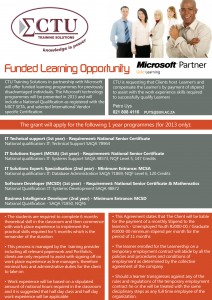We often hear people talking about bandwidth and we know that higher bandwidth is usually a good thing. But what does the term “bandwidth” mean?
“Bandwidth, when used in the computational terms, is the amount of data that can be transferred over a given connection in a set period of time. The speed of many things such as internet connections, local network connections, and even local connections between host computers and peripherals are frequently described in terms of bandwidth.
Bandwidth is usually noted in the format of bits-per-second (or whatever multiple of bits-per-second is most practical for the application). Thus you will frequently hear Internet Service Providers toting that their top-tier residential internet connection offers 50Mbit/s or an article on a technology blog explaining that a new cable standard offers a 2Gbit/s increase in available bandwidth over the previous standard.”
SOURCE: www.howtogeek.com


 Just like Lance Armstrong over the past few years, the university network also became faster over the past few months. Luckily we don’t have any dubious activities to declare.
Just like Lance Armstrong over the past few years, the university network also became faster over the past few months. Luckily we don’t have any dubious activities to declare.

 CHOC Childhood Cancer Foundation SA is a national organisation dedicated to providing assistance to children that are battling cancer or life-threatening blood disorders, and their families.
CHOC Childhood Cancer Foundation SA is a national organisation dedicated to providing assistance to children that are battling cancer or life-threatening blood disorders, and their families.